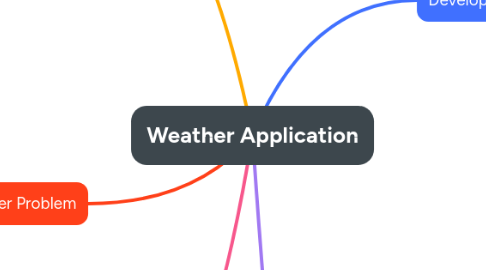
1. User Interface
1.1. Covers elements like color scheme, typography, and iconography to create an aesthetically pleasing and visually cohesive interface.
1.1.1. Visual Design
1.1.1.1. Typography
1.1.1.2. Iconography
1.1.1.3. Colour Scheme
1.2. Defines the navigation structure, gestures, and feedback mechanisms to ensure intuitive and efficient user interactions.
1.2.1. Interaction Design
1.2.1.1. Navigation Structure
1.2.1.2. Feedback Mechanisms
1.3. Accessibility
1.3.1. Colour Contrast
2. User Problem
2.1. Functionality
2.1.1. Addresses the core and additional features of the application, ensuring it meets the needs of users such as authentication, reward management, behavior tracking, and more.
2.1.1.1. Reward Management
2.1.1.2. Authentication
2.1.1.3. Behaviour Tracking
2.2. User Experience
2.2.1. Focuses on providing a positive user experience through effective onboarding, user feedback mechanisms, and usability testing to enhance user satisfaction and retention.
2.2.1.1. User Onboarding
2.2.1.1.1. Registration/Login Process
2.3. Usability Testing
2.3.1. Iterative Design
3. Project Scope
3.1. Define Objectives
3.1.1. Defines the objectives, target audience, features, and platform for the application, ensuring alignment with the client's needs and expectations.
3.2. Target Audience
4. Developer Problem
4.1. Technical Considerations
4.1.1. Covers technical aspects such as development platform, programming language, OS version, and device compatibility to guide the development process.
4.1.1.1. Development Platform
4.1.1.2. Device Compatibility
4.1.1.3. Language (Swift)
4.2. Security
4.2.1. Focuses on implementing measures like data encryption, secure authentication, and compliance with privacy regulations to safeguard user data.
4.2.1.1. King's Servers
4.2.1.2. Data Encryption
4.2.1.3. Admin Permisions
4.2.1.4. Secure Authentication
4.3. Performance
4.3.1. Optimization
4.3.2. Code Efficiency
4.3.3. Image Compression
4.3.3.1. Compressing images to improve application responsiveness by decreasing hardware strain
4.3.4. Network Requests
4.4. Maintenance and Support
4.4.1. Includes ongoing maintenance tasks like bug fixes and feature updates to keep the application functional.
4.5. Useablity Principles
4.5.1. Accessibility
4.5.1.1. Ensure that mentors and students can easily find each other and schedule mentorship sessions. The UI should be designed to effectively make it straightforward for mentors to provide services to students seeking mentorship.
4.5.2. Effectiveness
4.5.2.1. Implement design practices to cater to users and provided user personas.
4.5.3. Utility
4.5.3.1. Ensure objectives/goals of mentors and students. Ensure that the mentorship application features align with these needs. Provide a clear value proposition for both mentors and students to encourage participation.
4.5.4. Learnability/Ease of Learning
4.5.4.1. Develop an intuitive and user friendly interface that showcase a minimal learning curve through the use of familiar design patterns and features incorporated by similiar applications.
4.5.5. Safety
4.5.5.1. The implementaion of a strong security (King's Servers) measures to protect user data including: encryption, secure authentication, and privacy controls.
4.6. Coding Environment
4.6.1. The coding environment for the application encompasses the database, software, and libraries required to create and manage the application.
4.7. Technical Development
4.8. Hardware
5. Client Problem
5.1. Requirements
5.2. Constraints
5.3. Hardware
5.4. Matching Algorithm
5.4.1. Algorithm Development
5.4.2. Pairing Credits to Students
